
Ranking your site on top of Google is the first part of a long race to convert users into leads and customers.
If your site ranks on top of your desired keyword, it doesn’t necessarily mean it’ll get all the traffic from that search query.
Many SEOs often overlook the organic CTR (Click-Through Rate) and its importance in driving traffic to your website.
With a good CTR, the chances of the user visiting your website increase, positively affecting your search rankings. And just like you imagined, a bad CTR can affect your rankings negatively as well.
So, it’s no secret that improving organic CTR should be a goal while doing SEO.
And that’s what I’m going to teach you in this article. I’ve listed the 10 best tips to improve organic CTR and drive more clicks to your website.
- 1. Write Catchy Titles
- 2. Short & Simple URLs
- 3. Write Attractive Meta Descriptions
- 4. Add More Visuals
- 4. Utilize Schema Markups
- 5. Structure Content For Feature Snippets
- 6. Use Long Tail Keywords
- 7. Local SEO
- 8. Optimize Site Speed
- 9. Keep Users Engaged On Your Site
- 10. Identify the Lowest Organic CTR Content
I’ve used these proven tips for my websites personally and have always noticed significant results.
That being said, let’s get started.
1. Write Catchy Titles
The first thing people notice when they search for anything on Google is the page’s title. And if your title isn’t catchy or appealing, you’ll lose traffic to other websites with more catchy titles that entice the users to click.
So, how do you write catchy titles? Well, there isn’t any formula or secret to writing catchy titles. It all depends on deeply understanding the search query and writing a title that relates to what the user is looking for.
The title you write should appeal to the problem the user is searching for with a promise of a solution.
Just following this would help you create better titles for your content.
But sometimes, even that is not enough. You can use many other techniques to draw attention to your title. Here are some ways to do that:
Use Title Case
Make sure your titles are formatted in Title Case, so they look readable. Take a look at these two pages ranking for the keyword “Should you walk your dog at night”:
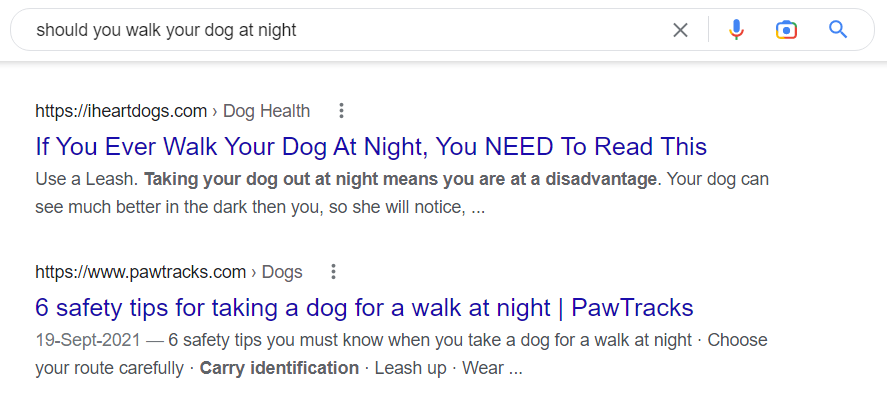
Which title looks more readable and enticing? I bet it’s the first one, right?
By using Title Case, each word in your title stands out and becomes easier to read. Moreover, it also allows the user to read the title fast and make a decision.
Using Title Case is a very small optimization you can make, which could significantly improve your CTR.
Use Brackets
You must’ve noticed many websites use brackets to enclose some information to make their titles more catchy and interesting.
And it works!
Here’s an example of two websites ranking for the keyword “best desk lamps for eyes”:
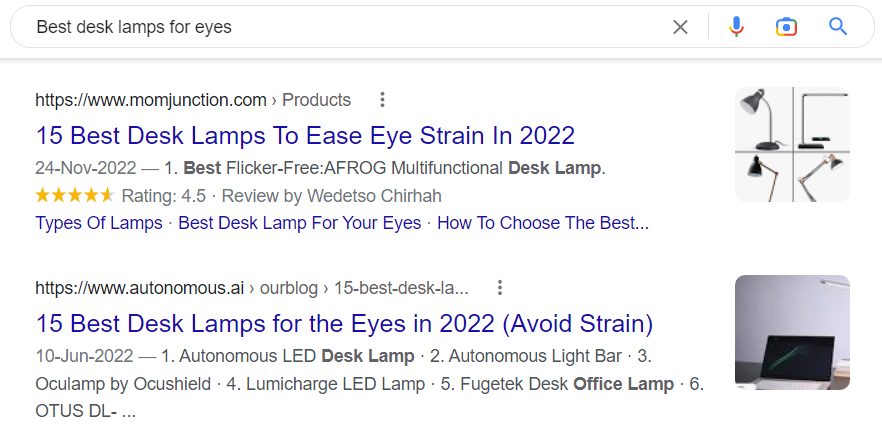
If you look at the titles of both websites, they’re basically the same except for the use of brackets in the second one.
The second website added some content in brackets to make its title more enticing and catchy. Sure, it’s ranking below, but the addition of “(Avoid Strain)” in brackets appeals to a problem that the user searching for this keyword might be having.
You can use brackets in your titles similarly to stress some important parts of the problem the user is facing. Or, you can simply add numbers in brackets to make your titles more catchy.
Use Numbers
Speaking of numbers, they are one of the best ways to make your titles catchy. Take a look at the two websites below:

Which one would you click? For me, it’s definitely the first one that has numbers in the title.
Why?
Because the title not only promises to give a solution to the problem but also tells me the different number of solutions, I would get if I clicked that post.
Using numbers this way can be very beneficial because it gives the user more confidence in your post.
Also Read: 7 Tips To Write Catchy Blog Post Titles That Get Clicks
2. Short & Simple URLs
Always write short and simple URLs for your content. Long and confusing URLs not only look ugly but also don’t give any information about your content.
Short and descriptive URLs are a good way of telling the user that your content is relevant to their search query.
Here’s how Google shows URLs in the SERPs –

You should always include your target keyword in your URLs, as it helps improve your organic CTR.
3. Write Attractive Meta Descriptions
Meta Descriptions come second after titles in the list of things a user checks before making a decision to visit a page.

Many SEOs ignore meta descriptions altogether because they think Google will pull up the relevant description from the content. And that is true; Google often does pull meta descriptions from the post content.
But this approach doesn’t give you any freedom or flexibility over what you want to show in your meta description. That’s why it’s crucial to write your own attractive meta descriptions.
The first rule of writing meta descriptions is following the length limit of 160-180 symbols. Anything beyond that gets truncated.
You should use powerful words that have a strong impact on what the user is looking for.
In cases where you’re writing FAQ-type content such as “Is cat fur harmful?”, you should include a short answer to the post in your description. This helps you give the answer to the user right away, which tremendously boosts your CTR.
Lastly, just think of meta descriptions as an elevator pitch to your content. You have 160 symbols to convince someone to read your post.
Check: How to Add Meta Titles & Descriptions in WordPress
4. Add More Visuals
With the way Google now displays featured snippets and cards, it’s essential to use visuals in your content. Include useful images and videos in your content that provides value to the reader.

These images have a higher chance of appearing in the search results, which increases your organic CTR as your post stands out from the rest of the competition.
4. Utilize Schema Markups
One of the most overlooked aspects of SEO is the use of schema markups which can be a total game changer in how your website ranks on search engines.
Using schema markups helps you improve the visibility of your content on Google and can help you improve your CTR a lot.
There are schema markups for many types of content, such as reviews, recipes, movies, products, etc.
Here’s an example of a schema markup for a recipe:
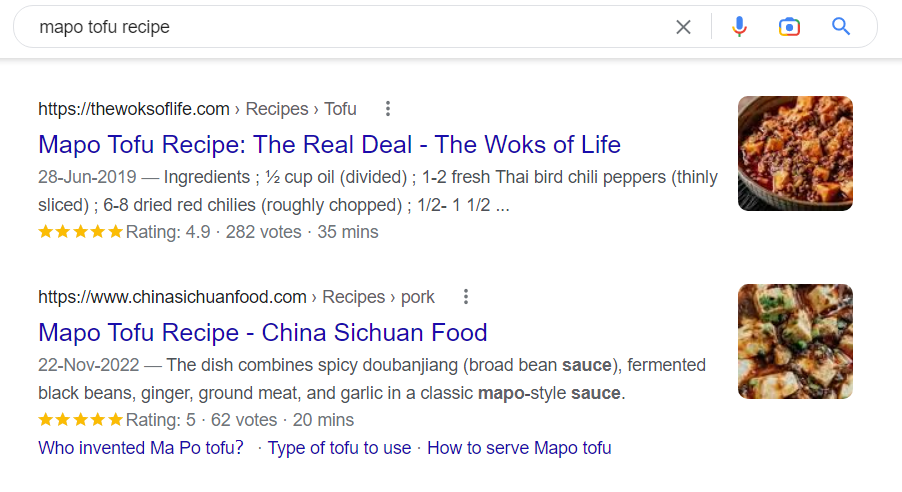
As you can see, the search result has additional information about the recipe, such as rating, time to cook, votes, etc.
These rich snippets make the search result more helpful for the user as it helps them make a decision much faster.
Without such rich snippets, you’re leaving a ton of traffic on the table for others to take. You can implement rich snippets using various SEO plugins such as RankMath and Yoast SEO.
5. Structure Content For Feature Snippets
Many search queries now show featured snippets, which appear as a box at the top of the search results. Here’s an example of a featured snippet:
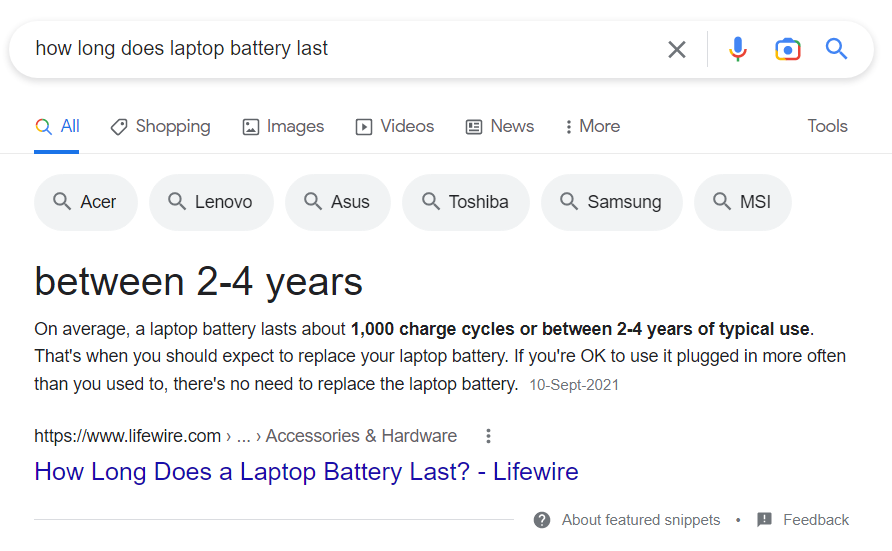
Featured snippets usually answer the user query directly on the search results page. So, why would a user visit your page now, right?
Well, according to a study by Hubspot, organic CTR for high-volume keywords improved by 114% when results appeared on the search results page.
This means even after getting an answer to the query; a user is most likely to click on the page for more information.
That’s why it’s important to properly structure your content to ensure you grab the featured snippet for the query.
This can be done by properly formatting your content. So, if your content is to answer a question, make sure to write a sweet and short paragraph that precisely answers the user query.
If it’s a list post, write a short bulleted list in a numbered format so that Google can understand your content and its structure more clearly.
6. Use Long Tail Keywords
Another good way to boost your organic CTR is by using long-tail keywords that are descriptive and match the search intent of the user.
Oftentimes, broader terms yield low CTR because they don’t fully match the search intent of the user.
With the use of long-tail keywords, users would be more likely to click on your post because they feel it will contain exactly the information they’re looking for.
Finding long-tail keywords isn’t very difficult too. You can use SEO tools such as SEMRush or Ahrefs to find long-tail keywords.
Or, you can use other tools like Ubersuggest, which can give you a huge list of long-tail keywords for your desired keyword.
7. Local SEO
If you’re targeting local keywords, then it’s crucial to take advantage of localized content that can help you improve your CTR.
You can do this by adding your location and contact information to your content which would help the user find you more easily.
Having your business listed on Google My Business (GMB) is another great way to improve your visibility and get more clicks.
These two tips are more than enough to ensure your visibility for local searches and drive traffic.
But if you want to go beyond that, you can improve your GMB listing by adding all the relevant information about your business, such as open hours, FAQs, images, reviews, and more.
8. Optimize Site Speed
Site speed still remains one of the most important factors for ranking and driving traffic to your website.
Google has been very keen on ensuring sites meet the Core Web Vitals standards along with Page Experience as well.
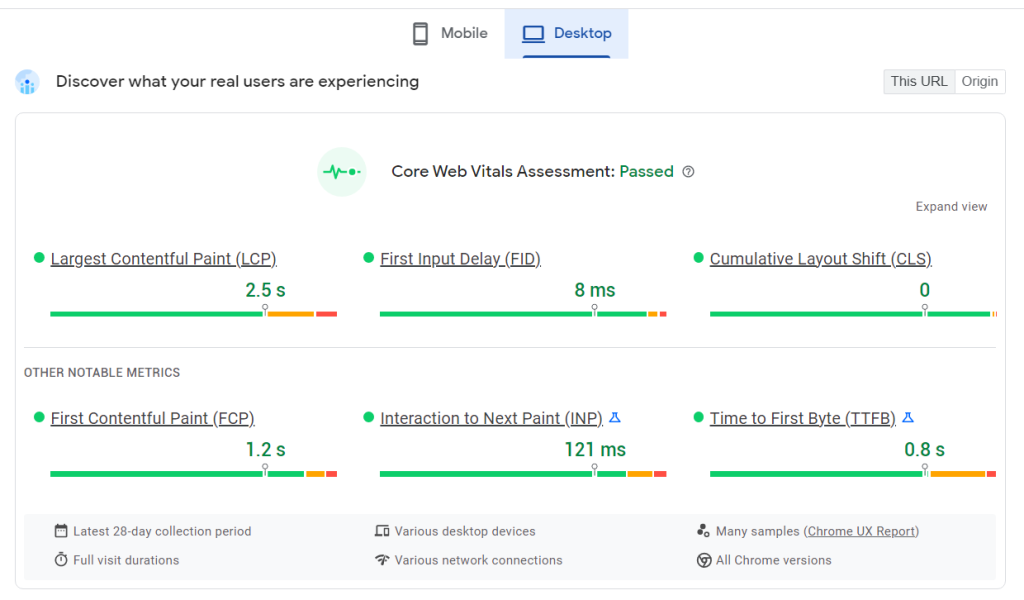
To improve your site speed, you first need to identify how your site currently performs. You can check this on Google’s PageSpeed Insights tool, which shows your website speed and tells you if your site passes the Core Web Vitals tests.
Besides this, you can also test your site on GTMetrix to get a more detailed analysis of your site’s performance. This will give you a detailed overview of what’s slowing down your site.
You can then use this information to optimize your website using different speed optimization plugins such as WP Rocket, FlyingPages, etc.
Lastly, if you’re not using a CDN on your website, then you should start using one right away. That alone will improve your site speed a lot.
9. Keep Users Engaged On Your Site
A big reason for low CTR is a high bounce rate. This happens when people click on your website and then click back to the search results page.
This behavior indicates to Google that the website the user clicked on doesn’t meet their requirements. As a result, your CTR decreases along with negative effects on your ranking.
To avoid this, you need to make sure users are engaged while they’re on your website.
This can be done in many ways, one of which is making sure your content is well-formatted and readable. Use short paragraphs in your content so that the user can read or skim through the content easily.
On top of this, add images between your content so that the user doesn’t have to read a huge wall of text.
Good internal linking, site navigation, and design are also other crucial factors that’ll help you keep users engaged on your site.
10. Identify the Lowest Organic CTR Content
The last tip to improve your CTR is to identify the lowest CTR content currently on your website.
You can do this by going to your Search Console and going to the Search Results tab. Here, you can find search queries along with their impressions, clicks, and CTR.
This report can help you identify pages with low CTR. By identifying the low CTR pages from this report, you can then apply all the tips we listed above and make changes accordingly.
Conclusion
So, that’s our list of the best tips to improve organic CTR and drive more traffic to your website.
The tips mentioned in this list are very useful and can help you significantly boost your CTR which in turn will result in more traffic, leads, and sales.
If you have any questions regarding the tips shared in this article, feel free to drop your questions in the comments section below.
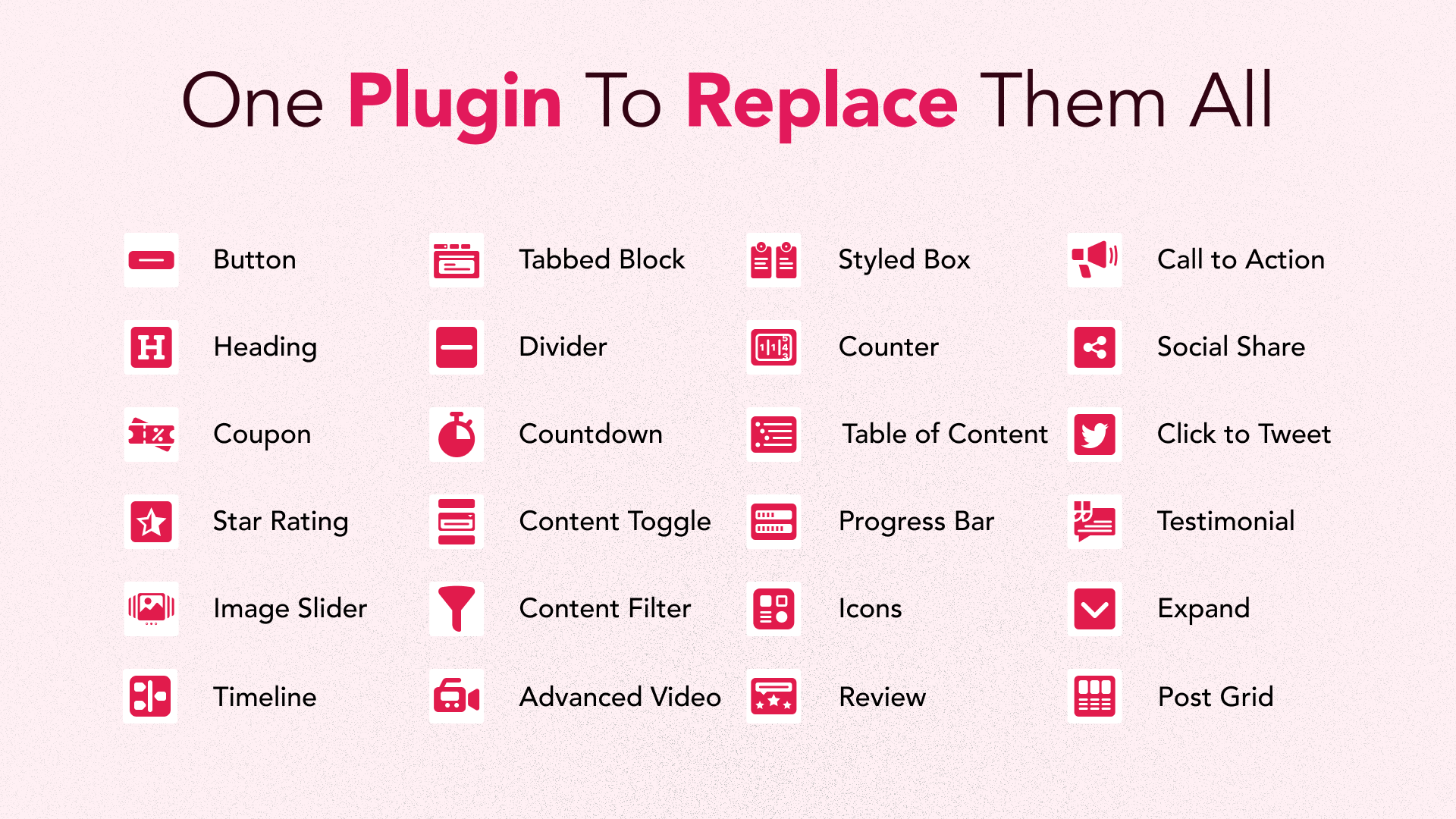
Leave a Reply